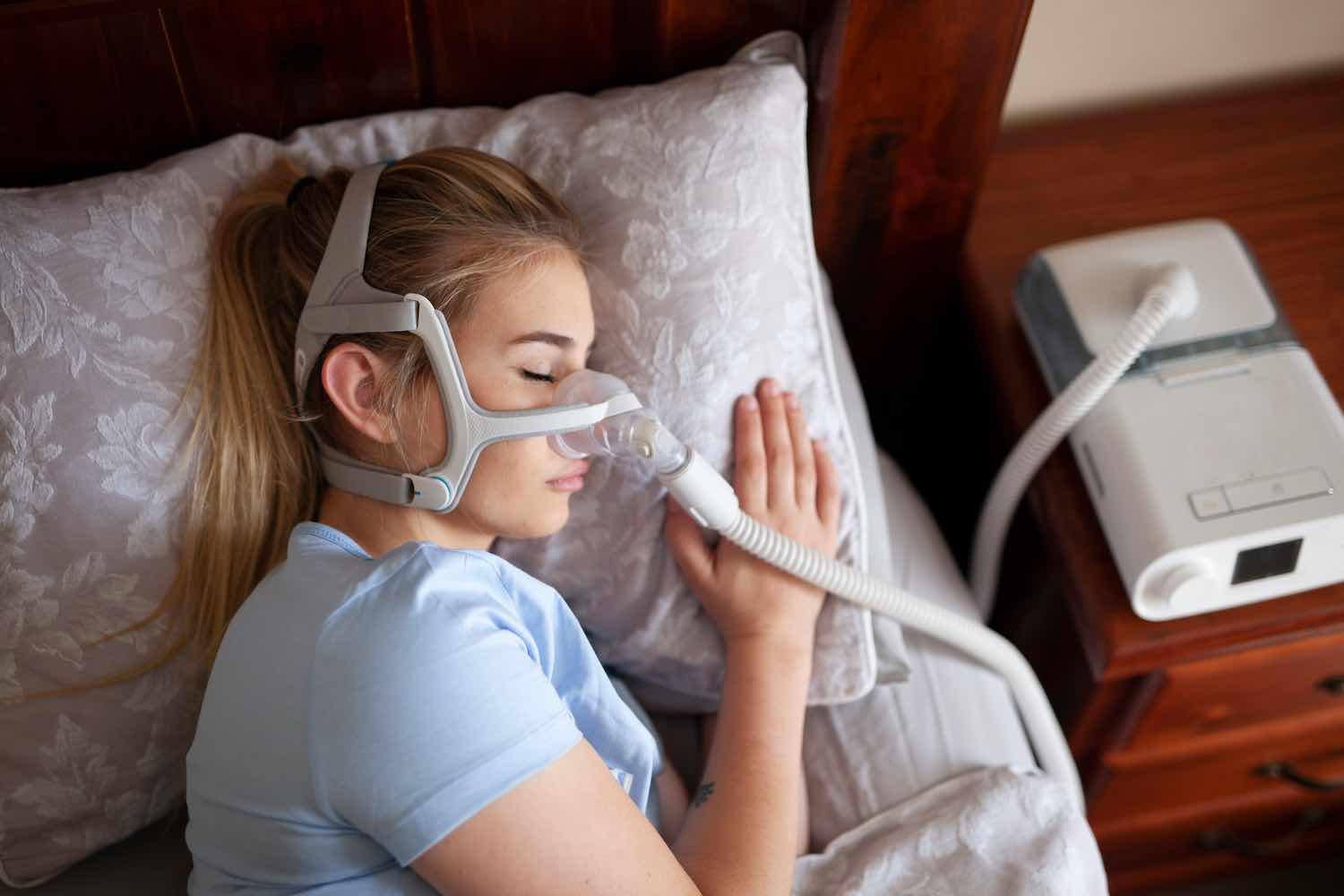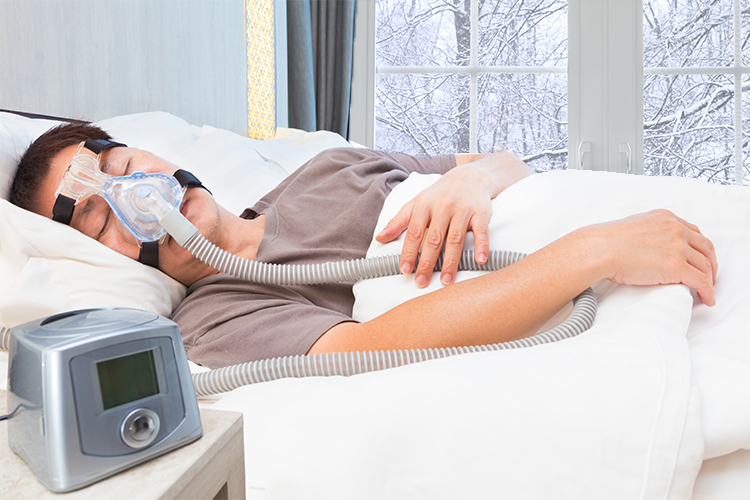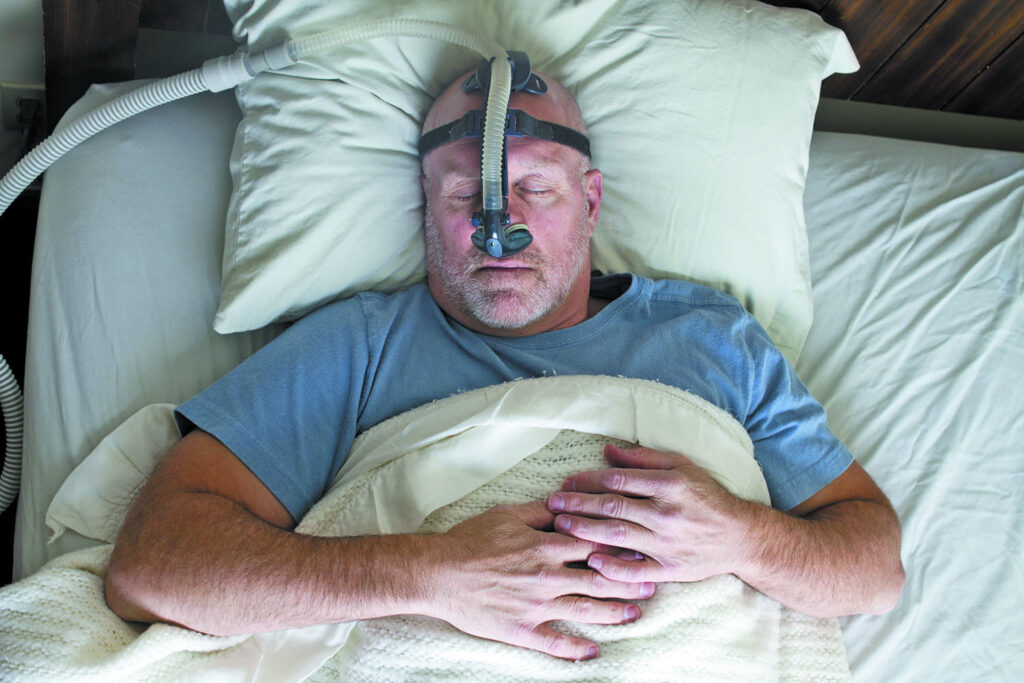Important tips on CPAP machines

It could take some time before you feel comfortable with CPAP treatment. Use the advice below to enhance the caliber of your CPAP sleep:
Start using your CPAP for little amounts of time during the day while you read or watch TV.
You may find it easier to wear your cpap mask if you do this. If you strive to accomplish that, it will seem more natural.
Your sleep regimen should include using CPAP machines.
Every nap and every night use CPAP.
The health advantages of cpap machines are less when it is used less often, and it is more difficult for your body to adapt to the treatment.
Make your surroundings a bit more comfortable.
Once you have the proper fit, adjust your mask straps and headpiece. Try using a cushion designed particularly to fit a CPAP mask and tube.
Make sure your mask fits you properly.
The majority of time, CPAP issues are brought on by poor mask fit. You’ll need to adjust the straps attaching the mask to your face if it’s too large. Your skin may get irritated or even become blistered as a result of the straps’ rubbing on your face. To stop the CPAP straps from itching your skin, you may purchase soft strap coverings. Because air will seep through the corners of a too-small mask, the seal won’t be as tight. Your eyes may be blown out by the wind. You could need a new mask or piece of headgear if you are experiencing one of these issues.
Set your CPAP machines to the “ramp” setting if the pressure seems excessive while you’re attempting to sleep.
With the ramp option, the pressure on your device will first be reduced and then progressively rise over time. You need to be able to snooze by the time the air pressure is at the ideal level.
Nasal congestion from CPAP therapy may be a problem; use a saline nasal spray to relieve minor cases of nasal congestion. If you have sinus or nasal congestion, a nasal spray could help.

If you have dry mouth, throat, or nose, use a humidifier.
The standard CPAP equipment component is a heated humidifier. It guarantees the air you breathe via your mask, which is warm and humid, is safe to breathe.
Set up a routine cleaning regimen for your equipment.
Once each week, wash your mask, tubing, and headpiece. Schedule this time so that you don’t forget to do it.
Tips for traveling with your CPAP machines
The Alaska Sleep Clinic is the place where people go to ask the most questions regarding moving CPAP devices. While many of our patients often go to the “lower 48” for holidays and to see family, many of our residents have “slope” occupations that need them to spend a lot of time away from home in between R&R breaks.
Living with sleep apnea may be challenging enough without all the inconveniences associated with flying. Many patients find it difficult to carry along CPAP machines when they travel, much less use one every night at home.
However, you shouldn’t allow the thought of leaving your computer behind make you depressed. Never, not even for brief travels, leave your computer at home. Unbeknownst to many, taking CPAP machines on the road is simpler than previously believed.
Here are some useful pointers for taking CPAP machines on the road.
Make a travel plan in advance.
No, you don’t need to spend additional weeks getting ready to travel with your CPAP machines, but you should make sure a few crucial things are taken care of before you go. It might be simpler and more pleasurable to plan your holiday in advance.
You are free to check your CPAP in your baggage even though many CPAP users prefer to travel with their devices. CPAP machines are not recognized as carry-on luggage since they are considered medical equipment protected by the Americans with Disabilities Act.
In the event that your baggage is misplaced, it is a good idea to have your CPAP machines with you.
Since more recent machines are often compact, light, and equipped with carrying bags, traveling with them shouldn’t be a problem.
There are CPAP devices available, however, that are even more practical and portable and designed specifically for travel. If you travel often, it could be a good idea to spend the money on a second gadget that is made with travel in mind.
- Double-check that you have all the plugs and adaptors needed for the situation. Since virtually all modern gadgets have universal power supply that can adjust to different voltages, traveling abroad shouldn’t be an issue.
- •A backup battery pack can be something you want to think about getting or hiring. These are excellent for outdoor adventures or even just as a backup in case of power disruptions.
- Add supporting documentation (especially cushions). Your mask pillows could cease functioning at any time.
- To avoid spills and possible machine damage, ensure sure the humidifier chamber is dry and empty before moving your CPAP machines.
- Make sure your airline seat has power outlets if you’re travelling overnight or want to use your CPAP to sleep while in the air.
- Have your prescription close at hand in case you run out of supplies or have equipment problems while you’re away from home. Request supplier suggestions for the region you wish to visit from your current CPAP provider.

What to anticipate at the terminal and on the aircraft
- A medical equipment baggage tag for your CPAP case is a smart option. However, the vast majority of TSA employees are familiar with CPAP machines Australia and can easily identify them as medical equipment.
- Your CPAP will need x-raying. Remove the machine from the travel case and put it in a separate screening bin to speed up the procedure. The carry case may be used to store the remaining equipment. Your CPAP machines may need to be swabbed by an agent in order to check for explosive remnants. If so, request that the agent use brand-new gloves and an unopened swab.
- If hygiene is a concern, put the CPAP machines in a transparent plastic bag before throwing it away.
- Carrying your medication with you could be a good idea in case TSA officers ask for further baggage verification.
- Make sure you have the required adapters or a backup battery pack if you want to use your smartphone while traveling.
- When filling your humidifier in the airline or airport restroom, use bottled water rather than tap water.
- You may always get a CPAP travel sweater to be more discreet if using your equipment while flying makes you feel uneasy.
Can’t get asleep when using your CPAP?
It may take some time at first to become acclimated to the sensation of CPAP treatment. Here are some easy actions you can take to assist you become acclimated to your machine and soon you’ll start to reap the rewards.
Try the following advice for falling asleep and using your CPAP machine and mask successfully:
Get used to using CPAP slowly
Try utilizing your CPAP treatment apparatus a few times during the day. It’s a fantastic idea to wear it while you’re not weary, such as when you’re reading or watching TV, to see if any tweaks are necessary.
Your treatment expert will have adjusted all of your equipment’s settings to meet your requirements for treating sleep apnea, but you may need to make a few minor changes to the settings on your mask or humidifier.
Ensure that your CPAP mask is cozy.
When your CPAP mask doesn’t fit correctly, therapy issues arise most often. You could find it difficult to fall asleep as quickly as you should if it doesn’t fit well when you go to bed.
During the day, put on your mask. To establish a good seal and to make it comfortable, make little changes. You can see what you’re doing if you stand in front of a mirror.
Try laying down and putting on your machine after making some modifications to how it feels. When you’re laying down, your face will take on a somewhat different shape. This is a crucial step that you should not skip. You may test your sleep apnea machine using a feature called “Mask Testing Mode.”
The headgear straps securing the mask to your face will need to be tightened if it is too large. You may find this annoying. In a similar vein, a mask that is too tiny may not seal correctly, allowing air to blow into your eyes. Visit a CPAP clinic if you have one of these issues to check the fit of your mask.
You don’t have to put up with this if you’re uncomfortable with how the mask or head straps feel on your skin. To prevent your skin from rubbing against the mask, you may purchase soft nasal pads to place on your nose.
